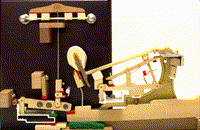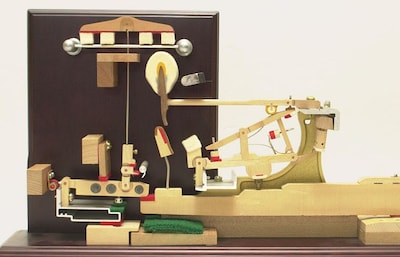What is a Piano's "Action"?
Érard's Fantastic Invention

The mechanism of the piano that causes hammers to strike the strings when a key is pressed is called the "action."
When one speaks of the history of the piano action, mentioning the repetition mechanism (double escapement) invented by Sébastien Érard of France is a must. This mechanism allows the pianist to quickly repeat a note without having to fully release the key. Up until the introduction of this mechanism, when a key was depressed, the hammer usually rose and struck the string and was not ready for the next keystroke, until it had fallen back to its at-rest position. Erard's invention made it possible to prepare for the next keystroke even though the hammer had not completely fallen back to its at-rest position.
It is said that Erard presented a prototype of this mechanism to Beethoven in 1803, and this helped the great composer write new works. This mechanism has also been passed down in a more refined form in today's modern actions.
Look carefully at the movement of the levers. The hammer rises up partway through its movement. This allows it to respond correctly and produce sound, even when played many times in succession. Functionally, the key can be played a maximum of 15 times per second.
Muting the Sound Is Also Important

The damper mechanism is another important part of the action. This mechanism quiets the sound instantly as soon as the finger is lifted from the key. In the photograph, the four white parts are the damper felts. When the finger is lifted from the key, the dampers touch the strings from above and stop the strings from vibrating. A damper weight is attached to the bottom of the long vertical wire.
Musical Instrument Guide : Piano Contents
Origins
Structure
How to Play
How the Instrument is Made
Choosing an Instrument
Care and Maintenance
Trivia
- The White Keys and Black Keys Were Reversed on Pianos in Mozart's Day
- Did Mozart's Piano Have a Pedal-Board?
- Piano with Automatic Accompaniment System in Beethoven's Day
- The Pianos Beloved by the Great Master, Sviatoslav Richter
- The Optimal Material for Piano Frames Is Also Ideal for Motorcycle Engines
- The Piano Soundboard Is a Board that Also Stops Vibrations
- Why Can't There Be More Than 88 Keys on a Piano?
- Why a Grand Piano Keyboard Feels Heavier Than an Upright Keyboard?
